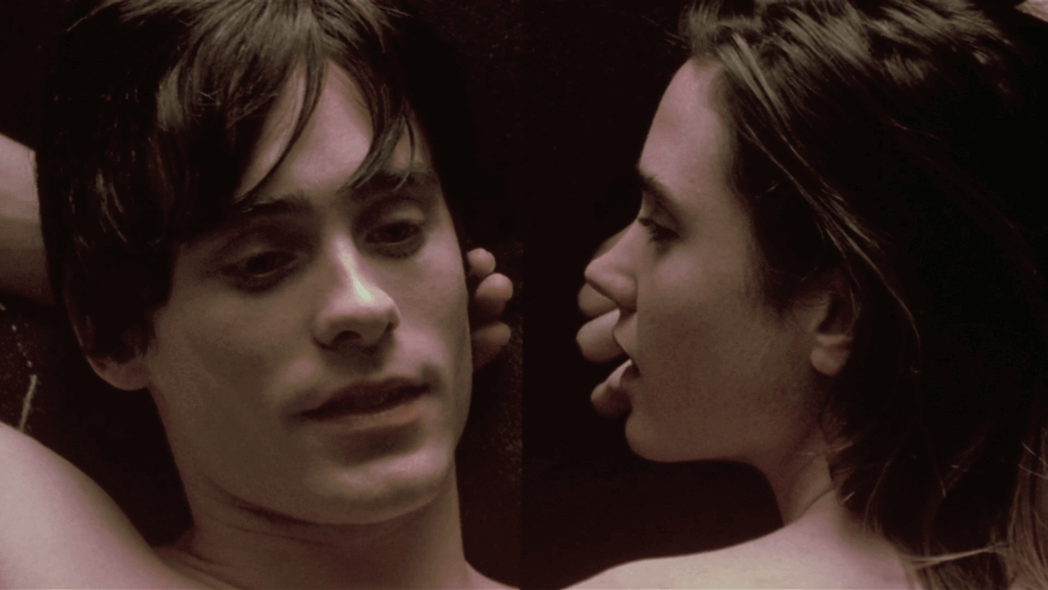Requiem for a Dream [2000] is Darren Aronofsky’s brutal adaptation of the book by Hubert Selby Jr. which follows four individuals whose dreams are shattered by their addictions. Starring Jared Leto, Marlon Wayans, Jennifer Connelly, with Ellen Burstyn in an absolutely phenomenal and heartbreaking Oscar-nominated performance.
Drugs Are Bad, Mmmkay? If there’s one thing that can be guaranteed about watching this film, it’s that one won’t be thinking about shooting up anytime soon after. The film takes an incredibly heavy handed approach at showing the despicable and terrible downward spiral that comes from drug addiction. It contains a rough and intense second half that’s not for the faint of heart, sending a barrage of imagery alongside an abrasive and haunting score to smash the audience over and over again with horrible and tragic realities. It’s gut wrenching stuff that may leave you in tears but will inevitably have you searching for someone to hug.
“Be excited! Be, be excited!” What’s really wonderful and effective about the film is that it doesn’t start with the bad news about drug use and addiction. We follow a few junkies who are overall good people and an older widow who’s fix is television. The junkies party, have good relationships and begin to start and grow a business on the streets which all goes extremely well. The film shows how easy life can be on drugs, how good it is to get off, how fun and relaxing it can all be. Drugs are fun, simple fact. People wouldn’t take them if they weren’t. It’s not until the business gets rough and supplies run low that the real strain of addiction comes into play and begins to threaten everyone’s utopias. The worst of these experiences is Sara Goldfarb, a lonely widow who receives news she’s been selected to be on television. When dieting doesn’t seem to be going as easy as she’d like so she can fit into her favorite red dress she gets prescribed diet pills (uppers) which she inevitably becomes addicted to. What makes her story worse is that she’s completely ignorant to her situation while the rest of the gang are well aware of their intake and decisions.
“Somebody like you can really make things all right for me.” Beyond the powerful performances and hard-hitting narrative lies a masterful piece of filmmaking of the kind rarely seen. Aronofsky's direction is filled with such style and clever techniques that it’s a wonder the story and performances aren’t overshadowed by the excessive editing alone. While most films contain an average of 600-700 cuts, this film has over 2,000. There are impeccable uses of split-screen utilized throughout, and constant uses of hip-hop montages used to give a sense of overwhelming addiction and loss of control. Extreme close-ups juxtaposed with extreme distances, long tracking shots, time-lapse photography, and the occasional use of SnorriCam are all used to bring the audience into a personal space with the characters so as to make the emotion of the film subjective rather than objective. The viewer is pulled into the thoughts and flows of the addicted mind and forced to lose control alongside these unfortunate souls.
“In the end, it’s all nice.” What’s left is a beautifully shot and impressively edited film that contains more imagination and panache in its production than some director’s entire filmographies. That and a sobering tale filled with honest and fatally flawed characters whose actions are glorious examples of what every person should strive to stay far and clear from. Also, Ellen Burstyn’s performance really is one of the finest pieces of acting put to film, hands down. Her work is immense and terrific, the kind of work that deserves recognition far and beyond a simple award nomination.
A bleak, mesmerizing piece of film with intense and superb performances.

